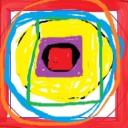Yahoo Answers is shutting down on May 4th, 2021 (Eastern Time) and beginning April 20th, 2021 (Eastern Time) the Yahoo Answers website will be in read-only mode. There will be no changes to other Yahoo properties or services, or your Yahoo account. You can find more information about the Yahoo Answers shutdown and how to download your data on this help page.
Trending News
Can anyone help me to understand what my English teacher means in this advice he wrote at the end of my essay?
I wrote a creative writing short story about a woman at her daughters funeral and she is looking around trying to think of who she thinks her daughter’s killer was. But at the end there’s a twist and the murderer was the mother all along and was only thinking about everyone else’s motive to see who she could pin the blame on.
My English teacher said it was really good with a good twist at the end but what I don’t understand about his advice was he also said “Could you use a prop of reflection/mirror to show that the narrator is the murderer/bully?”. We have to redraft our essays but I don’t understand this critique. Can anyone help? Thanks
8 Answers
- Anonymous3 years agoFavorite Answer
Your teacher is suggesting that you instill some connection between the big reveal and what leads up to it into your story. Anyone can write a story about a murder and have the murderer turn out to be some random character, but a good writer will have the ending connect to the narrative. It won't be a twist just for the sake of being a surprise that the reader wouldn't see coming. Once the reader learns the murderer's identity, he or she ought to be thinking "Aah, I should have known. If I'd looked at the clues I would have guessed long ago." That's why writing a good murder mystery story is much more difficult than people assume it to be. Without clues that foreshadow the reveal all you're really doing is attempting to throw everyone for a loop. And if you do that, you'll need to explain the motive cold, out of nowhere, and seeing as it's the end of the story, readers won't be keen to slog through that. A sloppy writer just throws anything onto the page. A good writer crafts a tale.
- nikki1234Lv 73 years ago
the psychopath murderer hating herself, and lashing-out at others with the pain and anger she feels for herself.
that is internal anger being repressed, and expressed as violence to others through the psychological mechanisms of denial, deflections and transference; thus she is "blaming others" for her own suffering and misery.
check this article on psychology's "dark triad".
- JanLv 43 years ago
By asking your teacher will show him you care about improving your work and give you a better grade.......it sounds to me he needs more details...like the mom was a bully and the daughters best friend knew this because friends tell their best friend everything....but. If you are wanting to hide the murderer until the end.(which is really clever....cause it leaves the reader going..."oh man,I didn't see that coming)....then let the teacher know this and give you example what he would use as a reflection.
- Anonymous3 years ago
I am thinking that he just means to have more mirrors and that as descriptive scenery for it all. a sort of tip off to the reader for it. If you think that it stands well all on its own, then leave it.
- How do you think about the answers? You can sign in to vote the answer.
- 3 years ago
Writers often use imagery to help tell their stories. The image of a mirror would raise ideas about the woman seeing herself, or catching a glimpse of someone else in the mirror. Sometimes mirrors reflect an image that isn't clear, either because the glass is foggy, dusty, etc., or because it's not straight. Any of these things can cause an image to be distorted. You could think about how she sees herself and how the mirror image can express that in the story. Or how she sees the others. You could also play with less realistic ideas, like her catching a glimpse of the mirror and thinking it's something else, like a ghoul or something, and then looking again and seeing that it's herself. What does this tell her (and the reader) about herself? These metaphors are fun to play with and can say a lot about character without the writer having to explain it all. "Show, don't tell", as they say.
- SamLv 43 years ago
You should have asked him to explain what he meant. That's what he's there for and we don't always understand what people mean when they speak. Just ask him to clarify.
It sounds like you didn't make the twist clear enough for the reader to know the mother was her daughters killer and to put a real punch to the twist the teacher wants you to elaborate the moms thoughts and reflection of the murder itself. It is a good story.
- CogitoLv 73 years ago
I'd advise you to ask your teacher - but I'd take it to mean that something earlier in the story should give a tiny hint - a suggestion - of her guilt. It would need to be very subtle but it could be extremely effective.
- Sir CausticLv 73 years ago
Yes. All you have to do is ask him what the hell he meant. Hope this helped.





